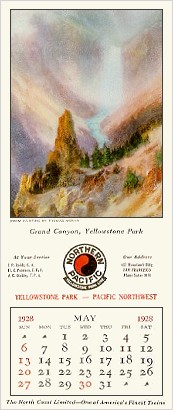At the height of the Civil War during the summer of 1864, on 2 July, Abraham Lincoln signed into law the official Act of Congress which created the Northern Pacific Railroad Company. This particular bill was significant because it awarded to Northern Pacific the largest land grant which had been rendered to any private corporation at the time: more than forty million acres.
Those in charge of the rail line proposed to build its eastern-most depot in one of the cities located near the shores of Lake Superior; its western terminus was to be at Puget Sound. Much of the intended route would follow that of the Lewis and Clark expedition across the unchartered west.
Securing enough financial backing for the Northern Pacific proved an arduous process, howsoever. Under ownership of, first, Josiah Pelham, then John Gregory Smith and group of European businessmen, fundraising had little success through the remainder of the decade. It was not until 1870, when financier Jay Cooke purchased the Northern Pacific, that ground was finally broken near Duluth, Minnesota.
 Cooke was the head of a Philadelphia banking house which had provided substantial funding for the Union effort during the Civil War. He was known for having a flair at generating publicity about any project or investment in which he took interest, and Jay Cooke had a decided interest in building this country's first transcontinental railroad. Well-connected politically and socially, he was privy to the 1870 survey report of an expedition whose members had tracked into the mountains of Yellowstone.
Cooke was the head of a Philadelphia banking house which had provided substantial funding for the Union effort during the Civil War. He was known for having a flair at generating publicity about any project or investment in which he took interest, and Jay Cooke had a decided interest in building this country's first transcontinental railroad. Well-connected politically and socially, he was privy to the 1870 survey report of an expedition whose members had tracked into the mountains of Yellowstone.
The Washburn Survey, named for the leader of this exploration, Henry Dana Washburn, contained graphic descriptions of Yellowstone's many mountains and canyons, its copious forest land, dozens of waterfalls and cascades, and the infamous hot springs. Cooke hoped to promote this vision of the West as a future travel destination by way of the railroad. His bank assumed the mortgage of the Northern Pacific, its telegraph lines, and its entire land grant.
Extensive advertisements were created and sold to newspapers throughout this country and in Europe. They lauded the merits of the Pacific Northwest, detailing the forests, mountain valleys, the fecund plains.
The ads went so far as to depict a mild climate, where bumper crops of grain and fruit could be harvested. Within a single twelvemonth, Jay Cooke's print publicity had generated thirty million dollars in revenue. Groundbreaking for the Northern Pacific took place on 15 February, 1870, at Thomsons Junction, just west of Duluth.
next page






